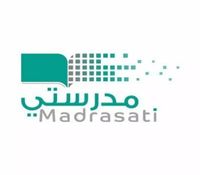In a significant move towards enhancing security and user experience, Microsoft is transitioning to a passwordless login system for its vast user base, which exceeds one billion. The company is actively encouraging users to adopt passwordless methods, which it claims offer greater security than traditional passwords, according to a report from PhoneArena.
Microsoft has emphasized that passwordless keys simplify the login process, allowing users to access their accounts using biometric methods such as fingerprints or facial recognition, or even a simple PIN. This shift is particularly important as millions of users depend on Microsoft accounts to access a range of services, from Windows operating systems to Microsoft 365 applications.
By the end of April 2025, Microsoft plans to unveil a new design for logging into its web applications and mobile apps, all crafted using the company's Fluent 2 design language. This initiative reflects Microsoft's belief that the time is ripe for modernizing the login experience, making it not only more secure but also more user-friendly.
The company is implementing updates to streamline the login process, aiming to reduce the number of clicks required on each screen. Creating a new Microsoft account has been simplified to just needing an email address, which becomes the primary key for account access without the need for a password. This email will also facilitate account recovery or login from new devices, making the overall process more efficient.
Microsoft’s overhaul of the authentication process is designed to minimize errors and enhance the user experience. The updated design aims to keep users focused by reducing distractions, ensuring a smooth experience across all devices, from large desktop monitors to smartphones. In response to user feedback, Microsoft has also introduced themes, allowing users to toggle between light and dark modes based on their preferences, starting with gaming applications and expanding to others soon.
Furthermore, the passwordless system relies on two keys: one stored on the user’s device, such as a smartphone, and the other on the platform being accessed. Both keys must be used together for successful login. This method has gained traction, with major companies like Apple, Samsung, and Google already incorporating passwordless authentication into their systems.
In parallel with these developments, the Ministry of Education in Saudi Arabia is making strides to enhance the educational process through the launch of the "My School Platform." This initiative aligns with the Kingdom's Vision 2030, aiming to improve educational quality and efficiency through modern technology.
The "My School Platform" is designed to provide a comprehensive educational experience, facilitating a range of services that contribute to student learning. To register, students must visit the official website, select the Microsoft account login option, and enter their personal details, including the email address issued by their school.
Once logged in, students can access virtual classrooms, engage with teachers, and take electronic assessments that provide immediate feedback on their academic performance. This platform is not only about convenience; it represents a significant step towards a more interactive and engaging educational environment.
According to the Ministry of Education, the platform plays a crucial role in achieving the objectives of Vision 2030 by enhancing the quality of education and preparing students for future challenges. It supports the development of a generation equipped with the skills necessary to thrive in a rapidly changing world.
As part of the registration process, users are required to ensure that their personal information is accurately entered, as this is vital for maintaining the integrity of educational records. The platform encourages students to actively participate in their learning by completing assignments and engaging with the provided content.
The "My School Platform" not only offers educational resources but also fosters a collaborative environment where students and parents can track academic progress and results. This transparency is essential for fostering an informed and engaged educational community.
In conclusion, both Microsoft and the Saudi Ministry of Education are making significant advancements in their respective fields, focusing on security and educational quality. Microsoft's shift to a passwordless system aims to enhance user security and streamline access to its services, while the "My School Platform" is set to revolutionize the educational landscape in Saudi Arabia by integrating modern technology into the learning process.



